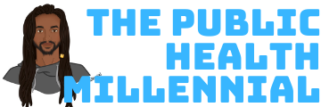If you have been keeping up with my post over the last couple weeks, you may wonder what I do in my fellowship position.
If you are now joining me, I am currently a Community Health Fellow at the Mat-Su Health Foundation in Wasilla, Alaska. I secured this fellowship before graduating from my MPH program.
One of the best things about my fellowship is the diversity of projects I get to work on. Beyond this, I get the support and mentorship to be successful at what I do.
Being the youngest full-time employee comes with challenges, but also comes with opportunities to learn and grown.
Support The Public Health Millennial on BuyMeACoffee
Here are the articles on My Fellowship Journey in chronological order:
- Why I Wanted A Public Health Fellowship
- How I Found My Public Health Fellowship
- How My MPH Degree Helped Me Get A Fellowship
(Related: The Guide to Getting a Good Internship in Graduate School (MPH))
My Main Job Duty
If you have been keeping up with ‘My Fellowship Journey’ then you know I was hired to work on the 2019 Community Health Needs Assessment (CHNA).
Specifically our CHNA has these components:
- Analyze data from the American Community Survey (ACS) data from the Census & other important local and state data sources
- Carry out a resident survey via phone and do Ranking of community issues
- A Photovoice component to hear from voices not heard from in prior CHNA’s
My main duty was to manage the Photovoice component and help with the other components as necessary. Photovoice is a form of Community Based Participatory Research (CBPR) where it ensures that the community is the driving factor in the research being done.
Photovoice is a research method that combines photography and discussions (to create captions and themes) to engage persons most affected by issues. With the ending goal being to empower communities towards social action and/or social change.
Photovoice Project
The goal of this project was to capture the voices of 10 groups that aren’t usually heard from in the Mat-Su Borough.
As the manager of the Photovoice project, I had to:
- Create an Request for Proposal (RFP) for bids for contractors to do a Group Leader Photovoice Trainings. Then had to select select the contractors through the competitive bidding process. I decided to included phone interviews for two sets of contractors to make a decision.
- Recruit at least 10 group leaders in the community. Thankfully through the CHNA’s Steering Committee they gave guidance on communities we could try to reach.
- Create the methodology we would use to do the project with advice from the contractors. I supported all group leaders throughout their projects and did debriefs for each of their group meetings.
- Produce a means to collect, sorting and analyze the data (photos, captions and themes).
- I had to do the write-up the Photovoice Chapter into the CHNA while also including pictures and captions throughout the other chapters of the CHNA
- And lastly, I will have to coordinate a Community Exhibition to show to the larger community. We are currently in this phase of planning and this Exhibition will be done in February 2020.
I will note that self-determination was a value of this project. Hence groups choose if they would like to share their data and findings with us and if they want to take part in the Exhibition.
Additionally, I had to help with the write-up of a couple other chapters of the CHNA.
Be sure to check out my Instagram Page (@thephmillennial) for more updates on this in the future.
Other Job Duties
Since being a part of the foundation, I have had the pleasure of working on many projects in my first 6 months.
My roles outside of the CHNA are primarily project management, program evaluation, and research & data needs.
I would say that my supervisor, the Vice President of Programs, uses me so that she doesn’t have much
Program Team Huddle (Grant Making)
Since I work for a Foundation, we do do a lot of granting to non-profits and other eligible organizations in the Mat-Su Borough. My foundation works in 4 Focus Areas:
- Healthy Minds
- Healthy Aging
- Health Families
- Workforce Development
Every Monday the Program Team has a huddle where we review pitches and proposals for strategic grant funding. Pitches are the initial grant submission from grantees that are reviewed before either being invited forward to submit a proposal.
When reviewing pitches we use a matrix and also critical analysis of the grant application to see if the grant would progress work for the entire system in the Borough.
Grant for Photovoice Component of CHNA (Grant Writing&Management)
My Foundation wanted to have part of Photovoice component of the CHNA be funded by another organization in Alaska being affected by our report.
Therefore, I filled out and submitted a $10,000 grant from the Alaska Mental Health Trust Authority.
My grant was accepted and thus I have to manage the grant through to completion. I did go over the grant management with our Grants Manager to see how best to manage it.
Interestingly, I learnt all I knew about grant writing from the grant reviews we did in our Program Huddle.
Foresight (Project Management)
Foresight is an initiative of the Rippel Foundation. It is trying to envision a new and better future for health through large scale resident engagement and intentional social interactions (IZI).
My foundation is a funder/partner in the project. Therefore I have been managing the light resident engagement in the Mat-Su Valley.
The process as of now includes getting 3 community organizations to be Listeners and carry out 8-10 interviews with populations they serve. This is a light process meaning that it just a small scale version of what is to unfold in 2020.
Youth 360 (Program Evaluation)
Youth 360 is an initiative that connects local youth to their peers, parents and community to increase health and wellness throughout Mat-Su. They focus on building social connections and strengthening resiliency through free activities and clubs for middle and high school youth.
This project came about from a grant from the Robert Wood Johnson Foundation to mirror an international program that tackles social isolation and increases social connections to improve health and well-being. The model this program is mirroring is the Icelandic Prevention Model that addressed adolescent substance abuse.
I work both in program evaluation of this program as well as working with the data.
My evaluation work focuses on ensuring the evaluation meets the needs of the program for appropriate development. Additionally guiding what outputs and impact data would be most important.
While for the data work I do, I collect the data from the various pilot sites and have created presentations that the Youth360 Director will use for community presentations.
Connect Mat-Su (Program Evaluation)
Connect Mat-Su is a comprehensive and innovative health and social services information and referral resource center.
It is a network that is both a physical and virtual resource center linking residents with immediate access to the information, referrals, and direct assistance needed to thrive physically, mentally, socially and emotionally.
I independently monitor the evaluation of this program.
This essentially means ensuring that the short, medium and long term indicators/measures are adequate for good measurement of the program success. I also have to ensure that what data we are asking to collect is not burdensome to the staff of the program. I also review the logic models and other reports to ensure they meet our needs and deliverables.
Trauma Sensitive Schools (Program Evaluation)
Trauma Sensitive Schools (TSS) embraces a whole-school approach that enables all children traumatized to exposure to adverse experiences to succeed in school. This is an evidenced-based approach to addressing Adverse Childhood Experiences (ACEs).
Schools teachers and administrators get trained in trauma sensitive approaches to building resilient students. However I do not believe the program was implemented the same across all schools.
As I stated above, different schools have implemented practices differently and therefore we are going to be evaluating this through a case study approach.
I led the team to choose which 3 schools should be chosen for case study analysis through a critical thinking approach. I will also be ensuring we have good data for analysis by school: grades, attendance, teacher turnover, disciplinary issues, etc.
Youth Homelessness Demonstration Project (Facilitation and Data)
The Youth Homelessness Demonstration Project (YHDP) is a youth-led HUD grant application for funding to address youth homelessness in the Mat-Su Borough. This grant allows us to apply innovative ideas to address youth homelessness and is an iterative grant with various components due at different times.
We will need the opinions of current or past homeless youth and therefore I am leading focus groups with various groups of youth who want their voices at the table. Then I will be bringing these voices to the larger community meetings where organizations along with some youth leaders will be present.
Also we will need data to get estimates of the various types for homeless youth. So I will be collecting data from organizations in the Borough that serve homeless youth. And then using that data to get the best estimate for certain populations specified in the HUD grant.
Emergency Medical System
The Emergency Medical System (EMS) in the Borough is being analyzed by contractors and will be used to create a 2020 EMS report. This report will have data that will inform how best we can better the EMS system from a systems-level.
My role in this project is to analyze the completed report and present the results to stakeholders.
This project has been pretty hands-off right now as the report is being written. When the contractors were in Mat-Su I was able to go to various EMS sites in the Borough with them. These included police stations and dispatch centers.

Other Opportunities
I sent in a proposal for the 2020 Alaska Public Health Summit using the Photovoice project I managed.
It was accepted a couple weeks ago for 60 minute spot for an oral presentation.
I am excited to be able to present on a project I enjoyed a lot and think is truly empowering to marginalized populations.
Projects Not Yet Started
Mat-Su Health Foundation Dashboard
My supervisor and myself are going to be creating a dashboard for the Board of Directors use. It will contain health indicators and will show the change over the years.
Therefore it will be used to track trends of big picture health indicators. And theoretically show how the Foundation’s work impacts them year to year.
Memorandum of Understanding (MOU or MoU)
A MOU is a formal agreement between two or more parties to establish official partnerships. Though they are not legally binding, they carry a degree of seriousness and mutual respect, stronger than a gentlemen’s agreement.
I have been tasked with creating a standardized MOU for external evaluation.
Therefore this will be used for work in all of the Foundation’s focus areas.
Conclusion
In concluding, I am really happy with my decision to pursue a fellowship. It has allowed me the opportunity to have a meaningful impact on a diversity of projects.
Additionally, I am able to get support and guidance in aspects of work I am not the most confident in.
I have only been working for 6 months but have been able to gain extreme amount of knowledge and skills in various fields of public health and philanthropy.
With my main roles being to have worked on the CHNA (with the Photovoice component), program evaluation and project management. I have been able to leverage knowledge and skills from my MPH to do high-level work.
(Related: 4 Steps to Secure a Job After Grad School)


